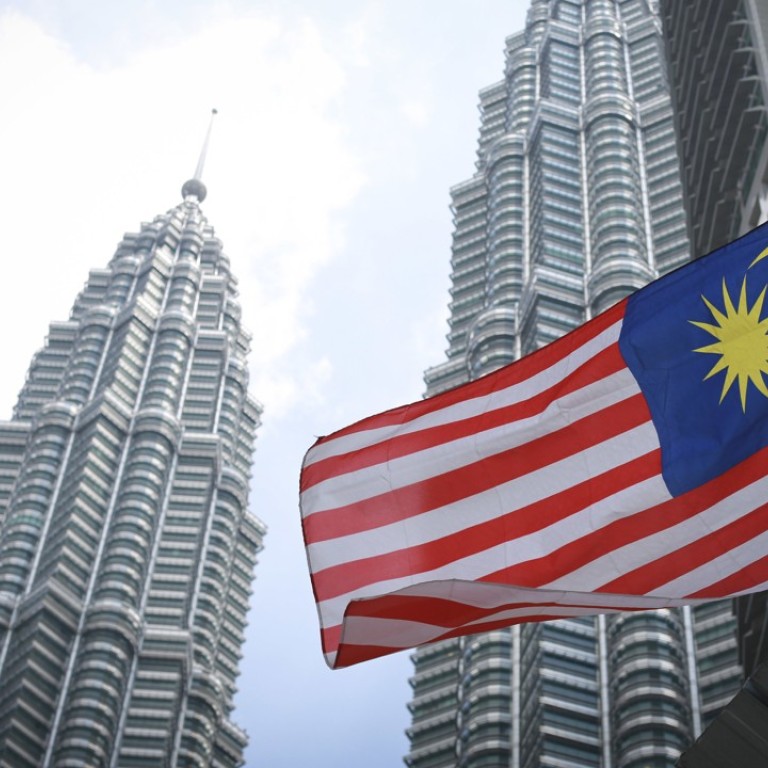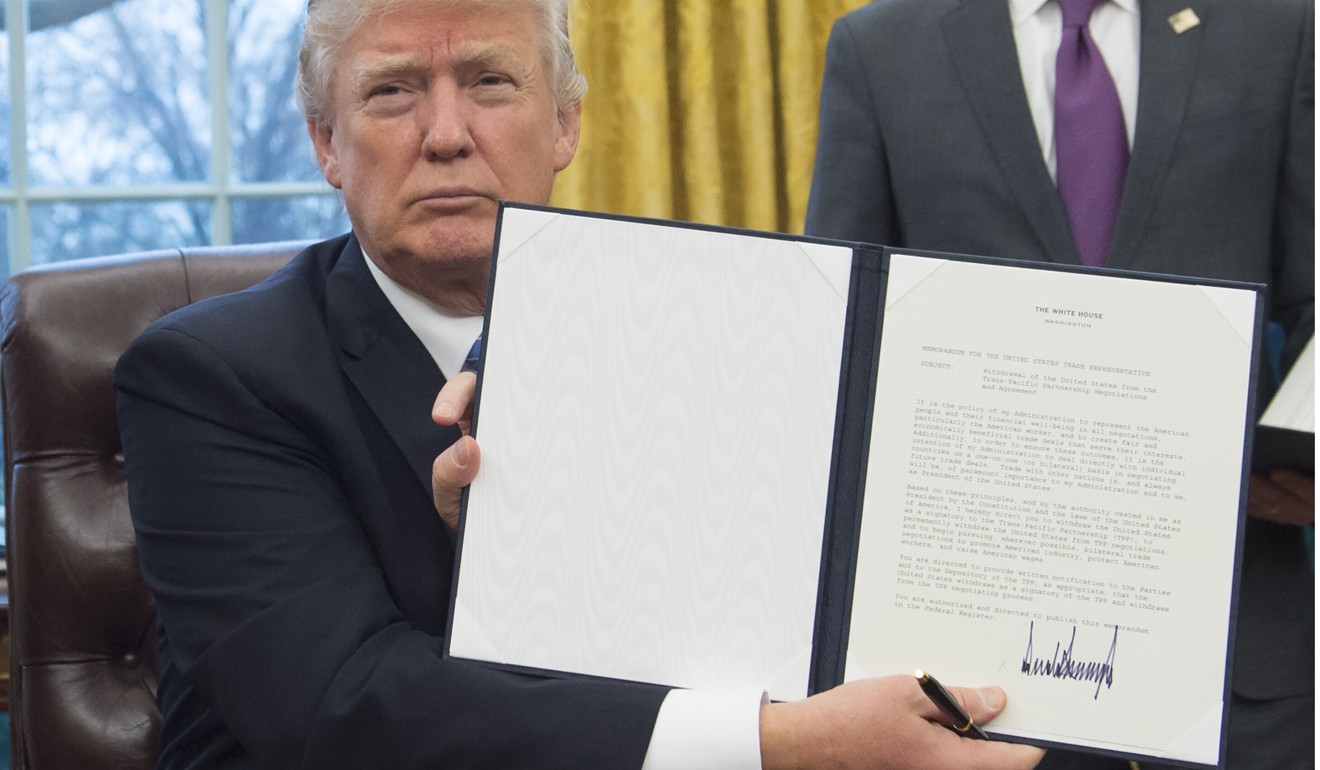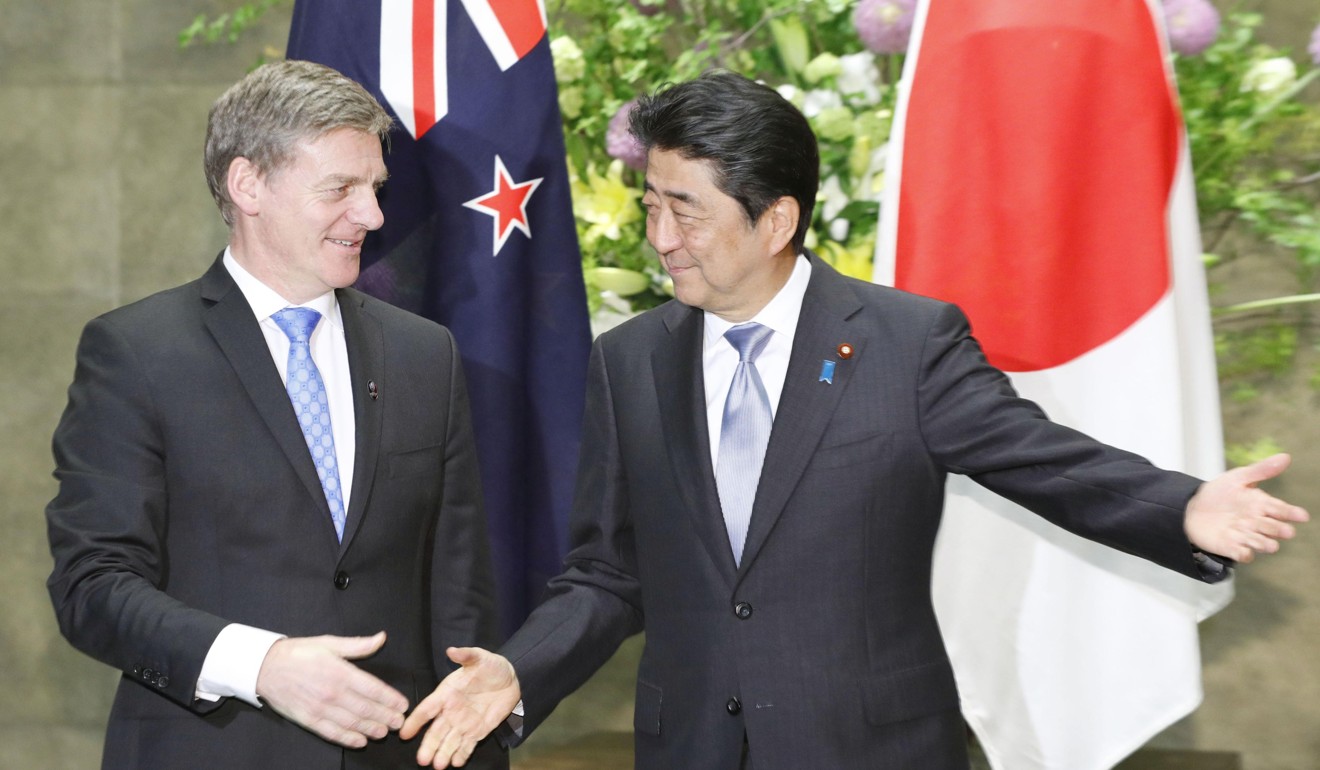
Here are three ways to keep TPP alive – even without the US on board
Despite Trump’s decision to yank the US from the Trans-Pacific Partnership, the remaining nations are mulling ways to keep the regional trade pact alive
Although US President Donald Trump’s decision to withdraw the United States from the Trans-Pacific Partnership (TPP) appeared to deal a death blow to the mega-regional trade pact, the 11 remaining nations have been mulling over every possible way to resurrect it.
Trade ministers from the remaining TPP member countries are expected to further discuss and declare their commitment to the trade deal on the sidelines of this weekend’s Asia-Pacific Economic Cooperation (Apec) meeting in Hanoi, Vietnam, in an effort to revive the TPP without the US’ inclusion, while keeping the door open for US to return. Trump decided to pull the US out of the TPP shortly after his inauguration.
There are at least three scenarios for reviving the TPP, according to observers and analysts.

The first option is relaunching it as “TPP-11”, without the US involved. Originally, the TPP included the US, Japan, Vietnam, Singapore, Canada, Australia, New Zealand and five other Asia-Pacific countries accounting for more than one quarter of total world trade. China has not been a member of this pact.
Apec members’ eyes also will be on the other Asia-Pacific trade initiative - the Regional Comprehensive Economic Partnership (RCEP) - a proposed free trade agreement between the 10 member states of the Association of Southeast Asian Nations and six other countries in the Asia-Pacific region, including China, Japan and Australia. The RCEP has been advocated and championed by China as an alternative deal to guarantee economic growth while US liberal rhetoric takes aim at the Trump administration’s expressed anti-globalisation and protectionist sentiments.
Trump has been sticking to his tough approach, demanding “free and fair trade” via a withdrawal from the TPP, renegotiating the North American Free Trade Agreement (Nafta) between the US, Canada and Mexico, and engaging in direct talks with major trading partners in an effort to reduce the US’ US$750 billion trade deficit and stop jobs from being lost abroad to lower-cost manufacturing nations.
During the Apec meetings, Robert Lighthizer, the new US top trade negotiator, will hold two-way meetings aimed at achieving official contact with key trade officials from Southeast Asia. Nearly all the other 20 members of Apec had requested bilateral meetings, US officials said.
Nafta would be Lighthizer’s top priority, as he notified the US Congress last Thursday that Trump intends to renegotiate Nafta. The other two Nafta participants, Canada and Mexico, will be at the Apec meeting.

“Things are fluid,” said Mireya Solís, the Chair of Japan Studies and a Senior Fellow at the Brookings Institution in Washington. “Japan lately hinted it will advocate for a TPP, even without the United States, and the exact membership number may vary.”
A TPP-11 could become reality if the remaining TPP members create a separate agreement that migrates all the TPP commitments to the new one, and leaves the door open for other willing countries to join, Solís said. In this scenario, the loss of the US would not prevent the TPP from going forward if a full consensus from the remaining TPP countries were achieved.
A second option would be creating a TPP-5, taking effect among at least five nations including Japan, Australia and New Zealand, sources involved in the negotiations told Kyodo News.

Without Washington, some countries, including Vietnam and Malaysia, which had hoped to boost exports to the United States, are believed to have expressed they would be reluctant to put the TPP into force; Chile and Peru have also shown no keen interest, Kyodo News reported.
A third option would be implementing the TPP on a provisional basis. Japan, Australia and New Zealand are believed to be on board; Brunei and Singapore are willing to agree upon this proposal.
Malaysian Trade Minister Mustapa Mohamed said there is optimism the US will return to the TPP one day, because Trump has shown readiness to shift his position on other matters, such as softening his stance toward China.”There has been less rhetoric and a more realistic approach,” Mohamed said.
A round of RCEP ministerial meetings will also take place May 21-22 in Hanoi, China’s Commerce Ministry announced.

